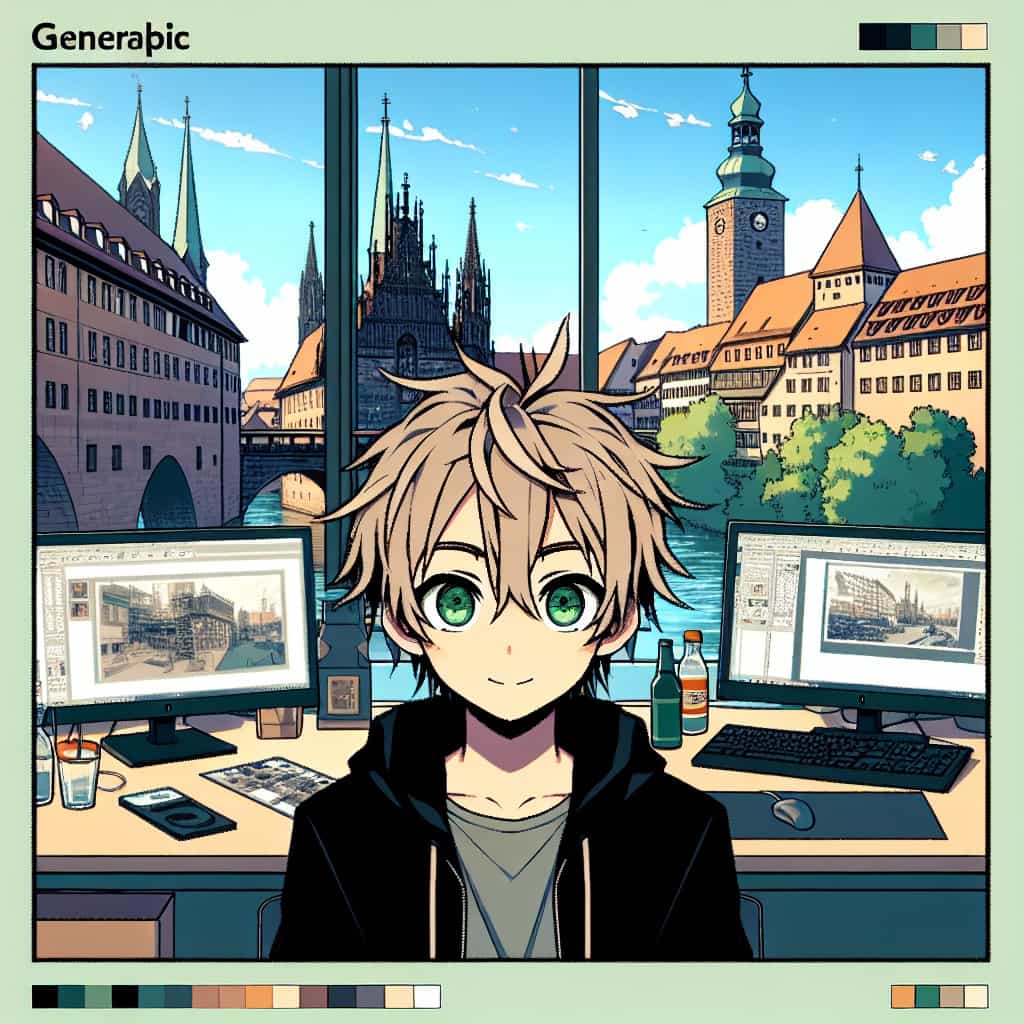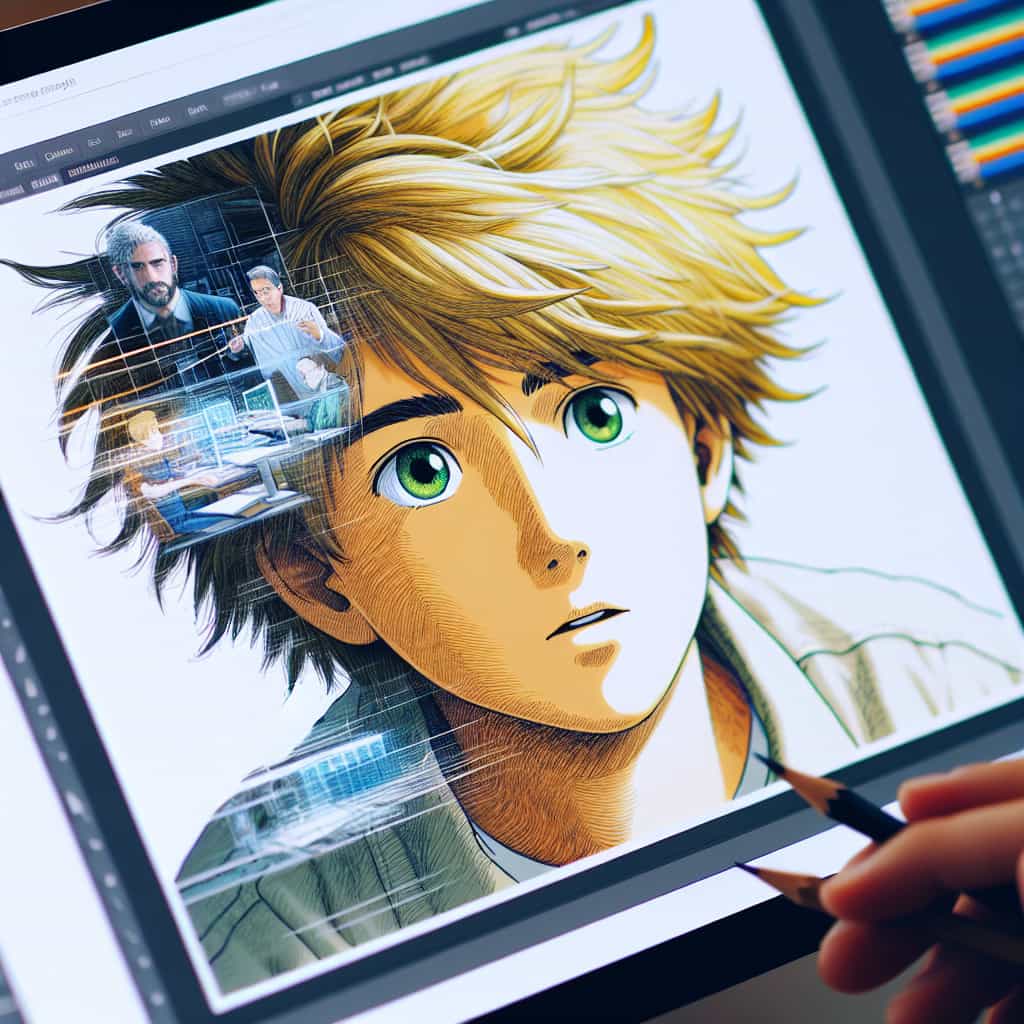UX design Agency Nuremberg
Welcome to the world of UX design in Nuremberg! As a leading agency in this field, we are dedicated to creating exceptional user experiences that captivate and engage. Join us as we delve into the art of crafting intuitive interfaces and seamless interactions, making digital products truly shine. Let’s explore the possibilities together!
1. Introduction to our UX design agency in Nuremberg
At XENOconcept, we are not your average UX design agency in Nuremberg. We don’t just create beautiful websites and apps; we strive to understand the needs and desires of your target audience, and use that knowledge to create an exceptional user experience that leaves a lasting impression.
Our journey began when our founder, Max, realized the power of user-centered design while working on a project for a local business. He saw firsthand how a well-designed website could not only attract more visitors but also convert them into loyal customers. Inspired by this experience, Max decided to start XENOconcept with the mission of helping businesses elevate their online presence through innovative and user-friendly designs.
Why choose us?
- We have a deep understanding of human psychology and how it relates to user behavior online.
- We stay up-to-date with the latest trends and best practices in UX design.
- We have a diverse team of talented designers who bring unique perspectives to every project.
- We prioritize collaboration and communication with our clients throughout the entire design process.
Our goal:
To create digital experiences that not only meet your business objectives but also delight your users at every touchpoint. We believe that when you put the user first, success will follow.
2. Our team of experienced UX designers
Expertise in user research and analysis
Our team of experienced UX designers is dedicated to understanding the needs and preferences of your target audience. We conduct thorough user research to gather insights into user behavior, motivations, and pain points. This allows us to design solutions that are tailored to meet the specific needs of your users.
Creative problem-solving skills
Our UX designers possess a unique blend of creativity and analytical thinking. They have a deep understanding of human psychology and can empathize with users to uncover hidden opportunities for improvement. Through their creative problem-solving skills, they can transform complex challenges into intuitive and seamless user experiences.
Collaborative approach
We believe in the power of collaboration. Our team works closely with clients throughout the design process, ensuring that their vision is realized in the final product. By involving clients in every step, we foster a sense of ownership and create designs that align with their goals and objectives.
3. Understanding the importance of user experience in today’s digital landscape
In today’s digital landscape, user experience (UX) plays a crucial role in determining the success of a website or application. Users have become increasingly discerning and expect seamless interactions across all digital touchpoints. A positive user experience not only enhances customer satisfaction but also drives business growth.
Increased customer loyalty
A well-designed user experience builds trust and credibility with users, leading to increased customer loyalty. When users have a positive experience interacting with your website or application, they are more likely to return and engage with your brand on an ongoing basis.
Competitive advantage
In a crowded marketplace, providing an exceptional user experience can differentiate your brand from competitors. By investing in UX design, you can create a competitive advantage that attracts and retains customers, ultimately driving business growth.
Higher conversion rates
A seamless user experience improves the likelihood of conversion. When users find it easy to navigate your website or application and accomplish their goals, they are more likely to take desired actions, such as making a purchase or submitting a contact form.
4. How our agency can help improve your website’s user experience
At our agency, we specialize in improving website user experiences through strategic UX design solutions. Our team of experts combines industry best practices with innovative thinking to create intuitive and engaging digital experiences for your target audience.
User research and analysis
We conduct extensive user research to gain a deep understanding of your target audience. Through methods such as interviews, surveys, and usability testing, we gather valuable insights into user behavior and preferences. This data drives informed decision-making throughout the design process.
Information architecture and navigation design
We focus on creating clear information architecture and intuitive navigation systems that guide users seamlessly through your website. By organizing content effectively and providing logical pathways, we ensure that users can easily find what they need without frustration or confusion.
Wireframing and prototyping
Our UX designers utilize wireframing and prototyping techniques to visualize the structure and functionality of your website before development begins. This allows us to iterate quickly on ideas, gather feedback from stakeholders, and refine the user experience based on real-world interactions.
Usability testing
We conduct rigorous usability testing throughout the design process to validate our assumptions and identify areas for improvement. By observing how users interact with prototypes or live websites, we uncover usability issues and make data-driven design decisions to enhance the overall user experience.
Continuous improvement
We believe in the iterative nature of UX design. Even after your website is launched, we monitor user behavior through analytics and gather feedback to identify opportunities for further improvement. This allows us to continuously optimize the user experience and ensure that your website remains aligned with evolving user needs.
5. The process of designing a user-centric website
Understanding User Needs
In order to design a user-centric website, it is crucial to first understand the needs and goals of the target audience. This involves conducting thorough research, such as user interviews, surveys, and competitor analysis. By gaining insights into user preferences and behaviors, we can ensure that our design decisions align with their expectations.
Creating User Personas
Once we have gathered sufficient data about the target users, we create user personas to represent different segments of our audience. These personas help us empathize with users and make informed design choices that cater to their specific needs and preferences. By keeping these personas in mind throughout the design process, we can ensure that our website meets the expectations of our target users.
Iterative Design Process
We follow an iterative design process that allows us to continuously refine and improve our designs based on user feedback. This involves creating wireframes and prototypes to test different design concepts and gather feedback from users. By incorporating this feedback into subsequent iterations, we can create a website that provides a seamless and intuitive user experience.
6. Case studies showcasing successful UX design projects we have completed
E-commerce Website Redesign – Increasing Conversion Rates
In one of our recent projects, we worked with an e-commerce client to redesign their website with a focus on improving conversion rates. Through extensive user research and analysis, we identified pain points in the existing user journey and implemented changes such as simplifying the checkout process and enhancing product discovery through personalized recommendations. As a result, the client experienced a significant increase in conversion rates by 20% within three months of launching the redesigned website.
Mobile App Interface Enhancement – Streamlining User Flow
Another successful case study involved enhancing the user interface of a mobile app to streamline the user flow and improve overall usability. We conducted user testing sessions to identify areas of confusion and frustration within the app. Based on the feedback received, we redesigned key screens, simplified navigation, and introduced intuitive gestures. The result was a 30% decrease in user drop-off rates and an increase in positive user reviews highlighting the improved usability of the app.
Corporate Intranet Redesign – Enhancing Employee Productivity
We collaborated with a large corporation to redesign their corporate intranet with the goal of enhancing employee productivity. Through extensive stakeholder interviews and usability testing, we identified areas for improvement such as simplifying access to important documents, streamlining communication channels, and integrating task management features. The redesigned intranet resulted in a 25% increase in employee engagement and improved efficiency in accessing critical information.
7. Our approach to conducting user research and gathering insights
User Interviews
We conduct one-on-one interviews with users to gain deeper insights into their needs, behaviors, and pain points. These interviews allow us to understand their motivations, preferences, and expectations when interacting with websites or applications.
Surveys and Questionnaires
We design surveys and questionnaires to gather quantitative data from a larger sample size. This helps us identify trends, patterns, and preferences among different user groups.
Competitor Analysis
We analyze competitors’ websites or applications to understand industry standards, identify best practices, and learn from their successes or failures. This analysis provides valuable insights into what works well for users in similar contexts.
List of techniques we use:
- User interviews
- Surveys and questionnaires
- Competitor analysis
- Usability testing
- Heatmap analysis
- Eye-tracking studies
8. The role of wireframing and prototyping in UX design
Wireframing for Conceptualizing Layouts
Wireframes are low-fidelity visual representations that outline the structure and layout of a website or application. They help us conceptualize the overall information architecture, content placement, and user flow. By creating wireframes, we can quickly iterate on different design ideas without getting caught up in visual aesthetics.
Prototyping for Interactive User Experience
Prototypes are interactive mockups that allow users to experience the interface and interactions of a website or application. They provide a more realistic representation of the final product, enabling users to provide feedback on usability, navigation, and overall user experience. Prototyping helps us identify potential issues early in the design process before investing time and resources into development.
List of tools we use:
- Balsamiq Mockups
- InVision Studio
- Figma
- Adobe XD
- Axure RP
- Sketch
9. Implementing effective navigation and information architecture on your website
User-Centric Navigation Design Principles
We follow user-centric navigation design principles to ensure that users can easily find what they are looking for on a website. This involves organizing content logically, using clear labels for navigation elements, and providing intuitive search functionality. By prioritizing ease of navigation, we enhance the user experience and reduce frustration.
Information Architecture Planning
Information architecture refers to the organization and structure of content on a website. We carefully plan the information architecture by categorizing content into logical groups, creating clear hierarchies, and implementing effective labeling systems. This helps users navigate through the website seamlessly and find relevant information quickly.
List of best practices for effective navigation:
- Use clear and descriptive labels for navigation elements
- Keep the navigation menu concise and prioritize important sections
- Implement a search bar with autocomplete functionality
- Create breadcrumb trails to provide context within the website hierarchy
- Ensure consistent navigation placement across different pages
- Incorporate visual cues such as hover effects or active states to indicate selected items
10. Optimizing your website for mobile devices and responsive design
The Importance of Mobile Optimization
In today’s mobile-centric world, optimizing websites for mobile devices is crucial. We ensure that our designs are responsive, meaning they adapt seamlessly to different screen sizes and orientations. This ensures that users have a consistent and enjoyable experience regardless of the device they are using.
User-Centered Responsive Design Approach
We follow a user-centered approach when designing responsive websites. This involves understanding how users interact with websites on different devices, prioritizing content based on user needs, and making design decisions that enhance usability on smaller screens. By considering the unique challenges posed by mobile devices, we create designs that provide an optimal user experience.
List of techniques for mobile optimization:
- Responsive design using media queries
- Mobile-first design approach
- Optimizing touch targets for smaller screens
- Minimizing load times for faster mobile browsing
- Adapting content layout and font sizes for readability on small screens
- Testing designs across various mobile devices and screen resolutions
11. Testing and iterating to continuously improve the user experience
User Testing Sessions
We conduct user testing sessions to gather direct feedback from users on our designs. This involves observing users as they interact with prototypes or live websites, asking them questions about their experience, and noting areas of confusion or frustration. User testing helps us identify usability issues and make informed design decisions to improve the overall user experience.
A/B Testing and Multivariate Testing
We use A/B testing and multivariate testing to compare different variations of a design element or feature. By randomly assigning users to different versions and measuring their interactions, we can determine which variation performs better in terms of user engagement, conversion rates, or other key metrics. This data-driven approach allows us to make data-backed decisions that optimize the user experience.
Iterative Design Process
We believe in an iterative design process where we continuously refine and improve our designs based on user feedback and data analysis. By incorporating feedback from user testing sessions, A/B tests, analytics, and other sources, we can iterate on our designs to address pain points, enhance usability, and ultimately provide a better user experience.
12. Measuring success through analytics and user feedback
Implementing Analytics Tools
We implement analytics tools such as Google Analytics or Mixpanel to track user behavior and gather quantitative data. These tools provide valuable insights into user engagement, conversion rates, bounce rates, and other metrics that help us measure the success of our designs.
Collecting User Feedback
In addition to analytics, we actively seek qualitative feedback from users through surveys, interviews, or feedback forms. This allows us to understand their satisfaction levels, identify areas for improvement, and gain insights into their overall experience with the website or application.
Iterating Based on Data Insights
By analyzing both quantitative data from analytics tools and qualitative feedback from users, we gain a comprehensive understanding of how well our designs are performing. We use these insights to make informed design decisions and iterate on our designs to continuously improve the user experience.
13. Collaborating with clients to ensure their vision is realized in the final product
Understanding Client Goals and Objectives
We start every project by thoroughly understanding our clients’ goals and objectives. Through meetings, discussions, and workshops, we collaborate closely with clients to align our design process with their vision for the final product. By establishing clear communication channels and maintaining an open dialogue throughout the project, we ensure that our designs meet their expectations.
Regular Check-ins and Design Reviews
We schedule regular check-ins and design reviews with clients to keep them involved in the design process. This allows them to provide feedback at key milestones and make necessary adjustments based on their preferences or business requirements. By involving clients throughout the process, we ensure that their input is valued and incorporated into the final product.
Iterative Design Process with Client Input
We believe in a collaborative approach where client input is integrated into each iteration of the design process. By involving clients in user testing sessions, design reviews, and decision-making, we ensure that their vision is realized in the final product. This collaborative approach fosters a sense of ownership and satisfaction for both our team and the client.
14. Our commitment to delivering high-quality UX design solutions within budget and timeline constraints
Transparent Project Planning
We believe in transparent project planning where we clearly define project scope, deliverables, timelines, and budget constraints at the outset. By setting realistic expectations from the beginning, we ensure that both parties are aligned on what can be achieved within the given resources.
Effective Resource Allocation
We carefully allocate resources based on the project requirements to maximize efficiency and minimize costs. This involves assigning skilled designers with relevant experience to different aspects of the project and optimizing workflows to streamline the design process. By leveraging our expertise and utilizing resources effectively, we deliver high-quality UX design solutions while staying within budget constraints.
Regular Communication and Progress Updates
We maintain regular communication with clients throughout the project to provide progress updates and address any concerns or changes in requirements. This ensures that clients are aware of the status of their project at all times and allows us to make necessary adjustments in a timely manner. Our commitment to open communication helps build trust and ensures that projects are delivered on time.
15. Testimonials from satisfied clients who have benefited from our services
Client Testimonial 1 – Company XYZ
“Working with [Our Company] has been an absolute pleasure. Their team’s expertise in UX design has transformed our website into a user-friendly platform that has significantly increased customer engagement. We highly recommend their services.”
Client Testimonial 2 – Company ABC
“[Our Company] has exceeded our expectations with their exceptional UX design solutions. Their attention to detail, user research, and iterative design process have resulted in a website that perfectly aligns with our brand and provides a seamless user experience. We are extremely satisfied with the results.”
Client Testimonial 3 – Company DEF
“The team at [Our Company] has been instrumental in improving our mobile app’s usability and overall user experience. Their expertise in responsive design and user testing has helped us identify and address key pain points, resulting in increased user satisfaction and retention. We highly recommend their services to anyone looking for top-notch UX design.”
In conclusion, if you’re looking for top-notch UX design services in Nuremberg, look no further! Our UX design agency is here to cater to all your needs. From creating intuitive interfaces to enhancing user experiences, we’ve got you covered. Don’t miss out on our exceptional services check us out today!













